So it dawned on me that I needed a fruit cart. (Don’t ask) It had two criteria:
- It had to be cute.
- It had to be cheap.
Looking around on the ‘net, I saw that they cost around $300 (usually more). That’s far more money than I care to pay, especially since I have a garage with tools ready to be used and scrap wood ready to be cut. So if I was going to make one, I was going to make it for absolutely as cheap as possible.
The Wheels
The wheels were going to be the hard part, so I figured it’d be the best place to start. Buying antique wheels was out of the question. Making an authentic wagon wheels requires dedicated skill. I found some plans online to make a wheel, but they seemed very labor-intensive. So I figured I’d have to come up with my own idea. The idea was to take an octagon and cut it into a circle.
I started with some scrap 1/2″ plywood, and cut 8 rectangles, 12″ wide and 3″ high. I then cut the short edges so they were 21.5-degrees. Put 2 of these pieces edge-to-edge, and you get a 45-degree corner. Put 8 of these pieces edge-to-edge and you get an octagon.
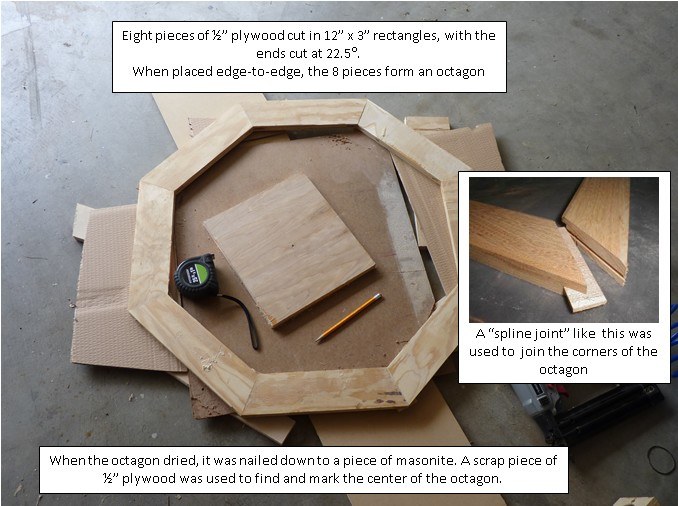 I made the spline joint by running the boards on the table saw, and then using a rectangle piece of wood that was the same width as my saw blade, I glued the corners together.
I made the spline joint by running the boards on the table saw, and then using a rectangle piece of wood that was the same width as my saw blade, I glued the corners together.
Once the glue dried, it was time to cut the octagon into a circle.
I used a nail-gun to nail the octagon to a piece of masonite. I then attached a 1/2″ plywood scrap in the center and used a ruler to find the exact center of the octagon. I then made a radius jig for my router, put the radius center at the center of the octagon, and cut the outside circumference. When that was finished, I reduced the radius arm by 2.5″ or so and cut another circle for the inner radius.
Cost so far: free (not counting glue). So far, so good.
To make the spokes, I took some 1/2″ oak and cut it down to 16 pieces of 12″ x 1″. I knew they’d look dorky if they were straight, so I knew I needed to taper the spokes.
To create the taper, I took 2 pieces of plywood to my table sled, set them at the right angles, and used a nail-gun to tack them into place. From there, I was able to cut tapers to make the wheels look right.
Here’s a photo of the 12×1 piece of oak, about ready to be tapered.
I measured the space at the center cut and cut an octagon out of 1/2′ plywood to make a center hub.
Cost so far: $0.
Glue Up
Since I wanted the wheel to be strong, I knew I’d want dowels going between the hub and the spokes. On a real wagon wheel, the spoke would be a tenon pressed into the rim. But since my rim is plywood, I knew that’d be out. So I set out to put dowels in it. This got to be a little tricky.
First Glue-up
I drilled 2″ deep holes along the axis of both ends of each spoke. Then I measured out the right spots on the wheel and drilled 8 holes around the circumference of the wheel. I knew there would be no way to get the rim+spoke dowels in place, so I drilled the 8 rim holes all the way through the rim, then applied glue and pushed the dowels all the way through the rim and into the spoke.
Hub
A wagon wheel just doesn’t look right if it has a goofy hub, so I set off to make some more-or-less proper hubs using pieces of oak from a busted stool leg. I drew out a 4.25″ circle, cut off the excess, and put it on my makeshift circle-cutting-jig for my router table:
The jig is nothing more than a strip of scrap plywood with a nail driven through it. The jig was clamped down to my router table so that the nail was 2.0″ away from the edge of the router bit. This resulted in a perfectly round 4″ diameter wooden circle.
I then put an ogee bit on the router and put a nice contour on the circumference of the hub. I used a Forstner bit to drill a recess at the center, and then used a 1/2″ drill bit to drill all the way through the disc.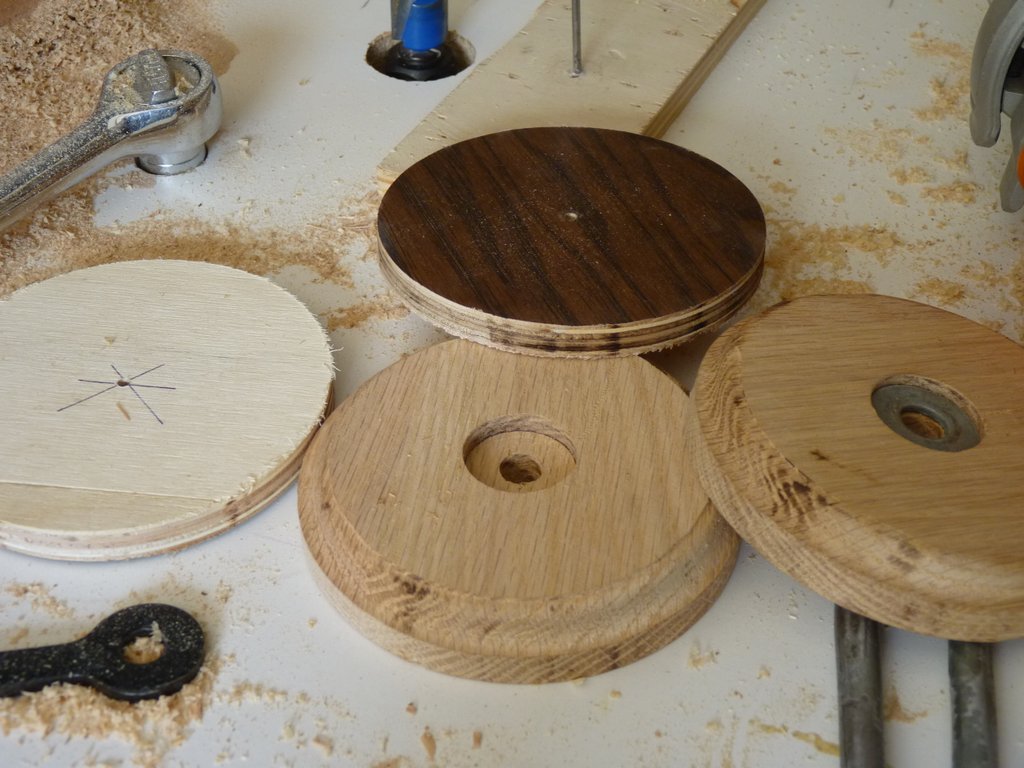
I made 4 discs total: two solid oak for the outside, and two hickory plywood (hardwood flooring) for the inside hub. When the pieces were finished, they were glued to the center of the wheel. I’ll add 8 screws around the inner diameter of the hub so there’s more than just glue that holds the hubs to the center of the wheel.
I used a discarded soaker hose as the tire. A little bit of Gorilla Glue and some clamping to hold it still. (Getting rid of the glue squeezeout was a bit of a pain).
So far, so good. Total cost is around $10, and that includes the glue.
Voila!

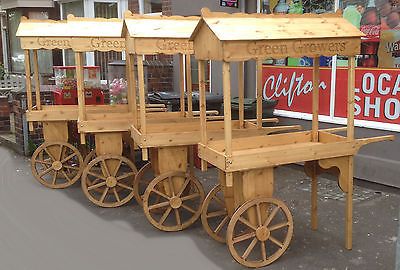
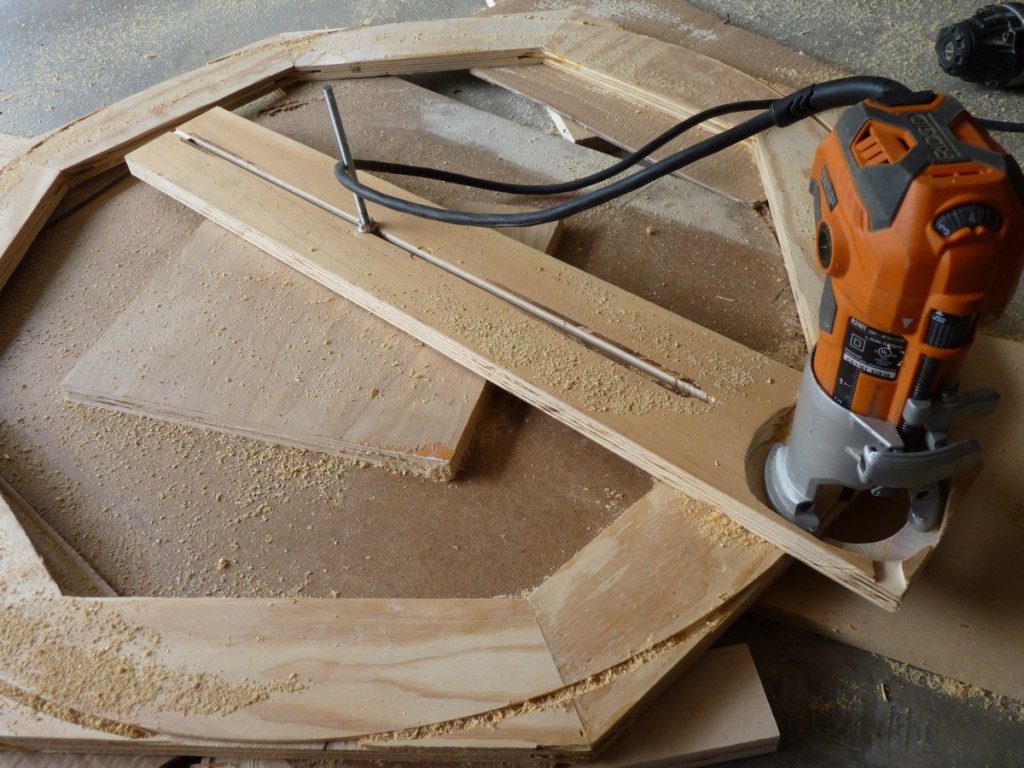
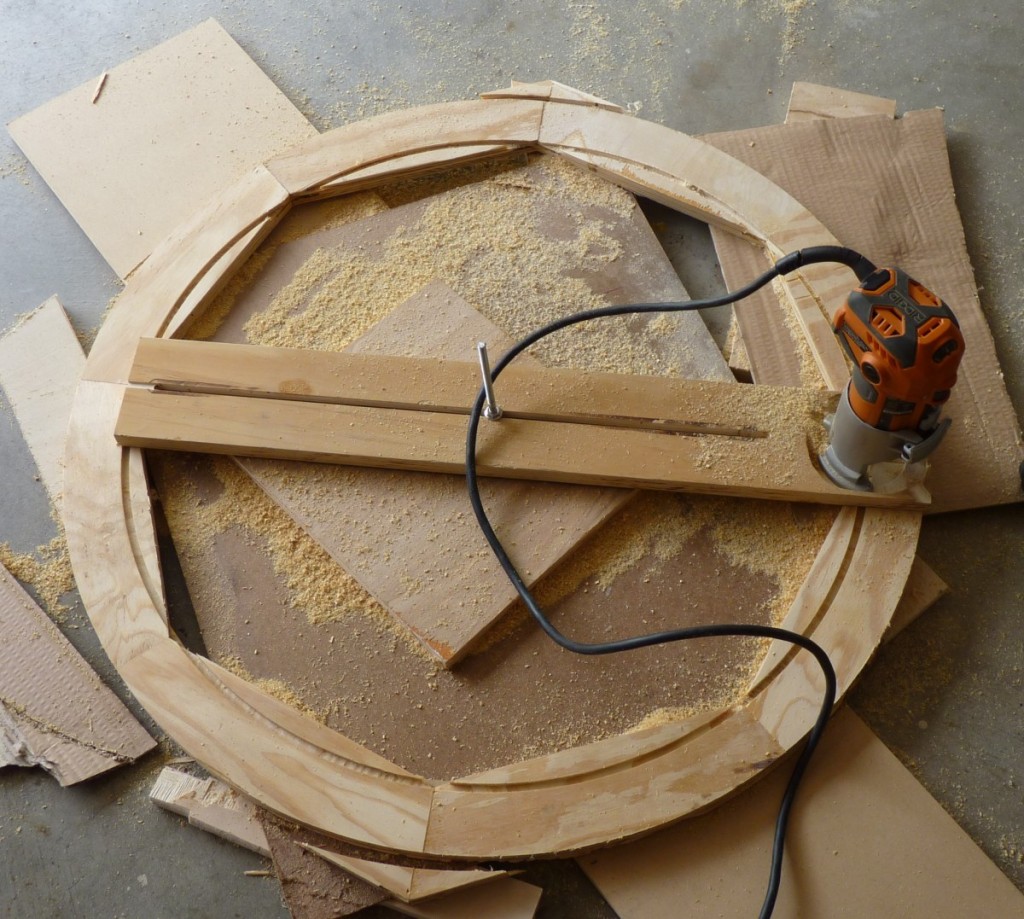
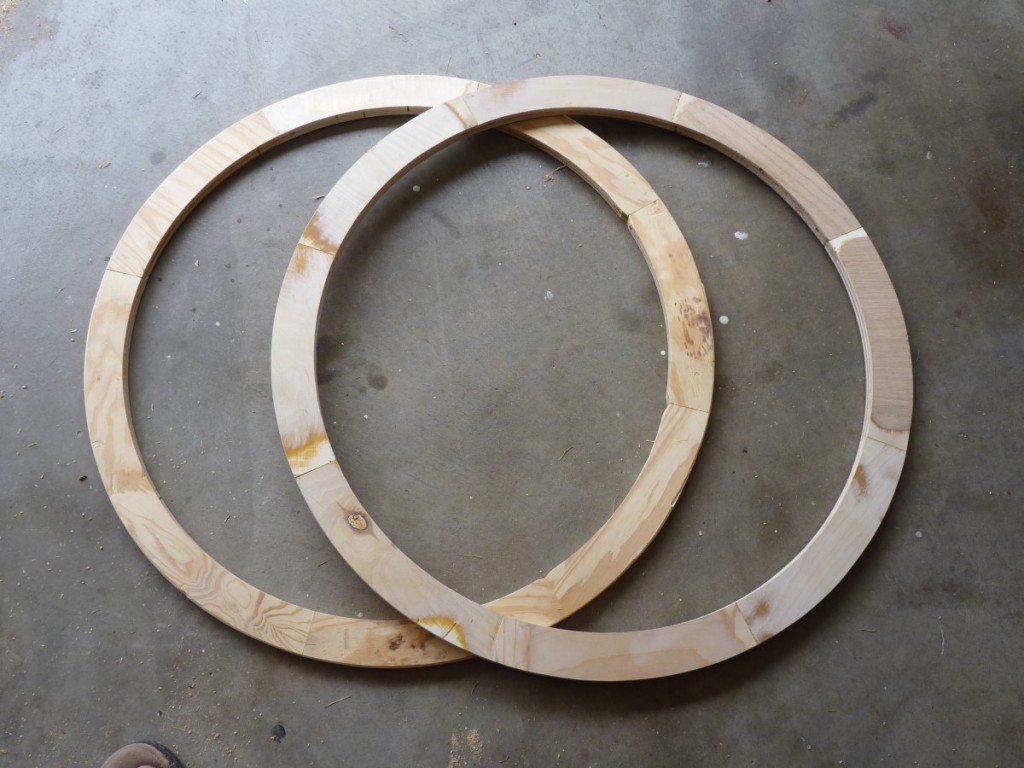
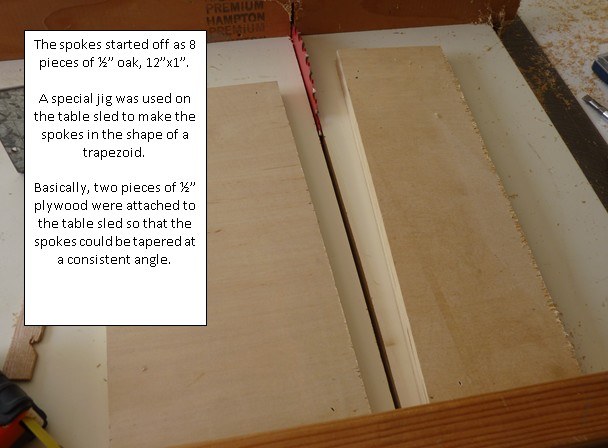
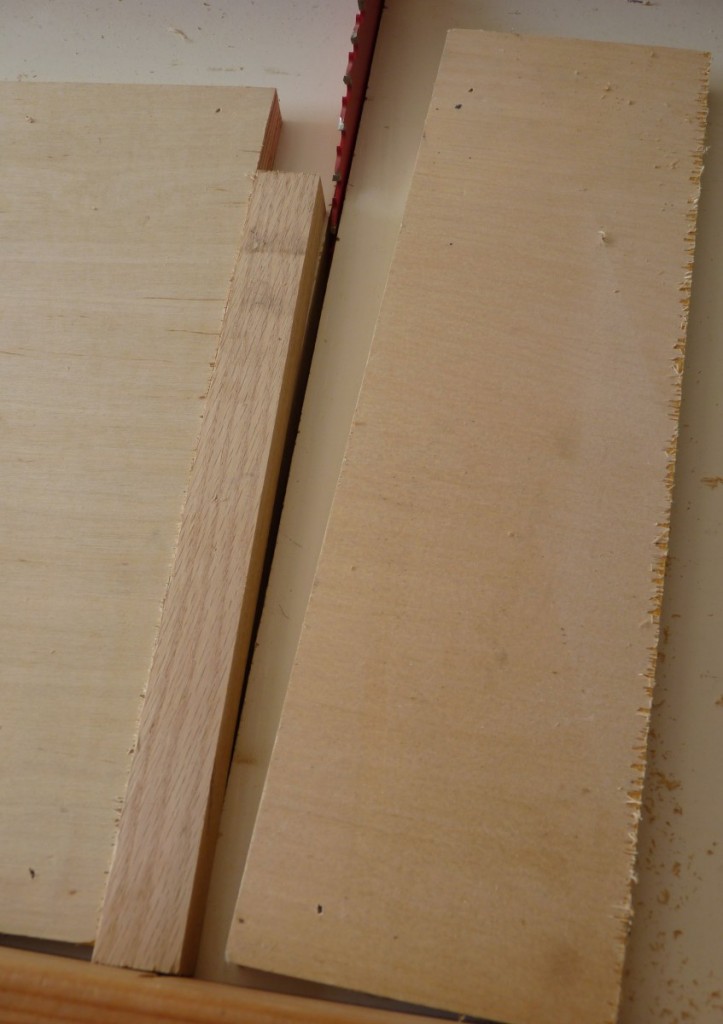
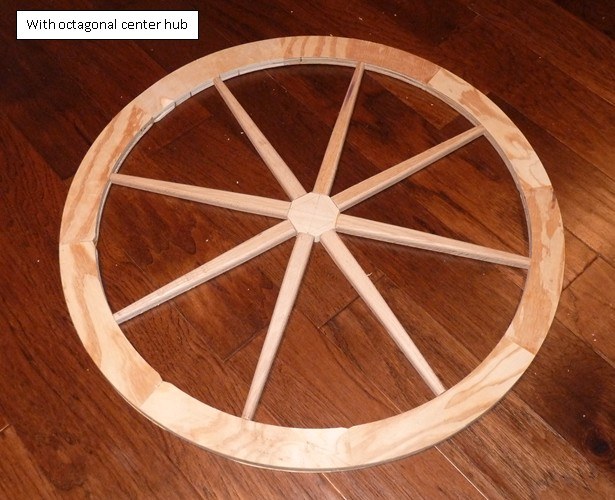
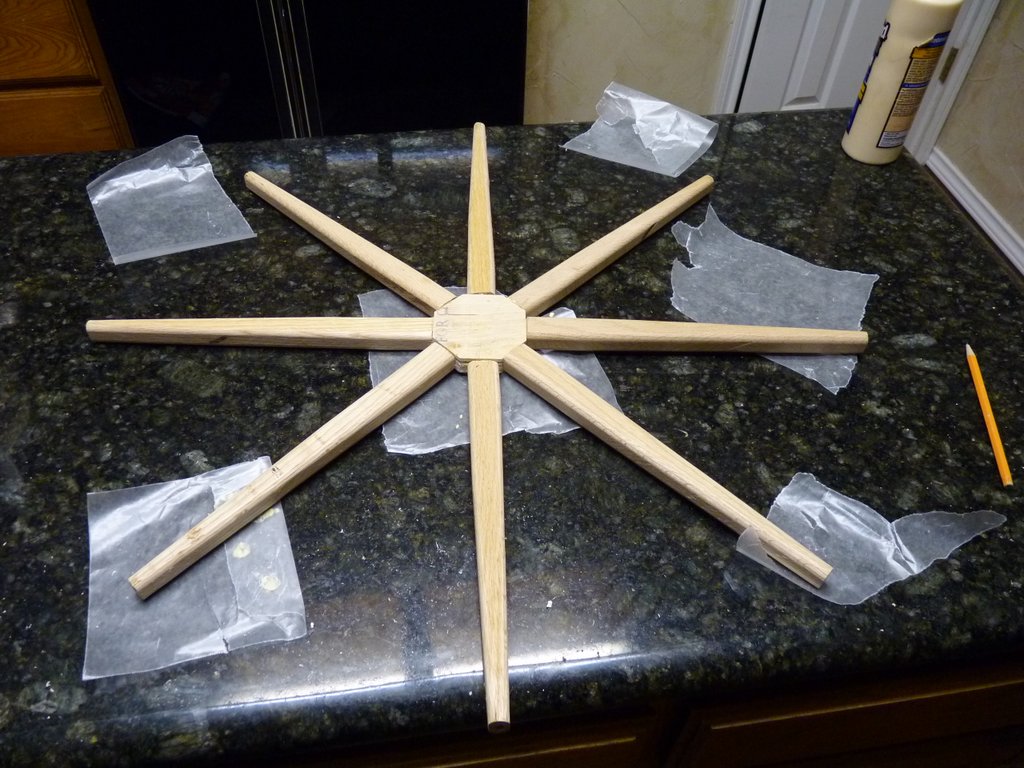
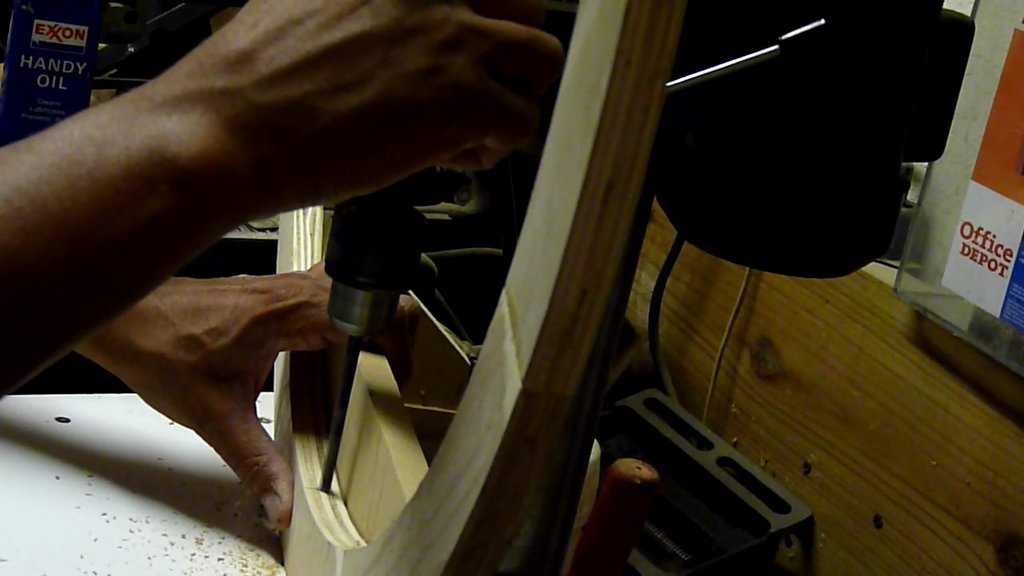
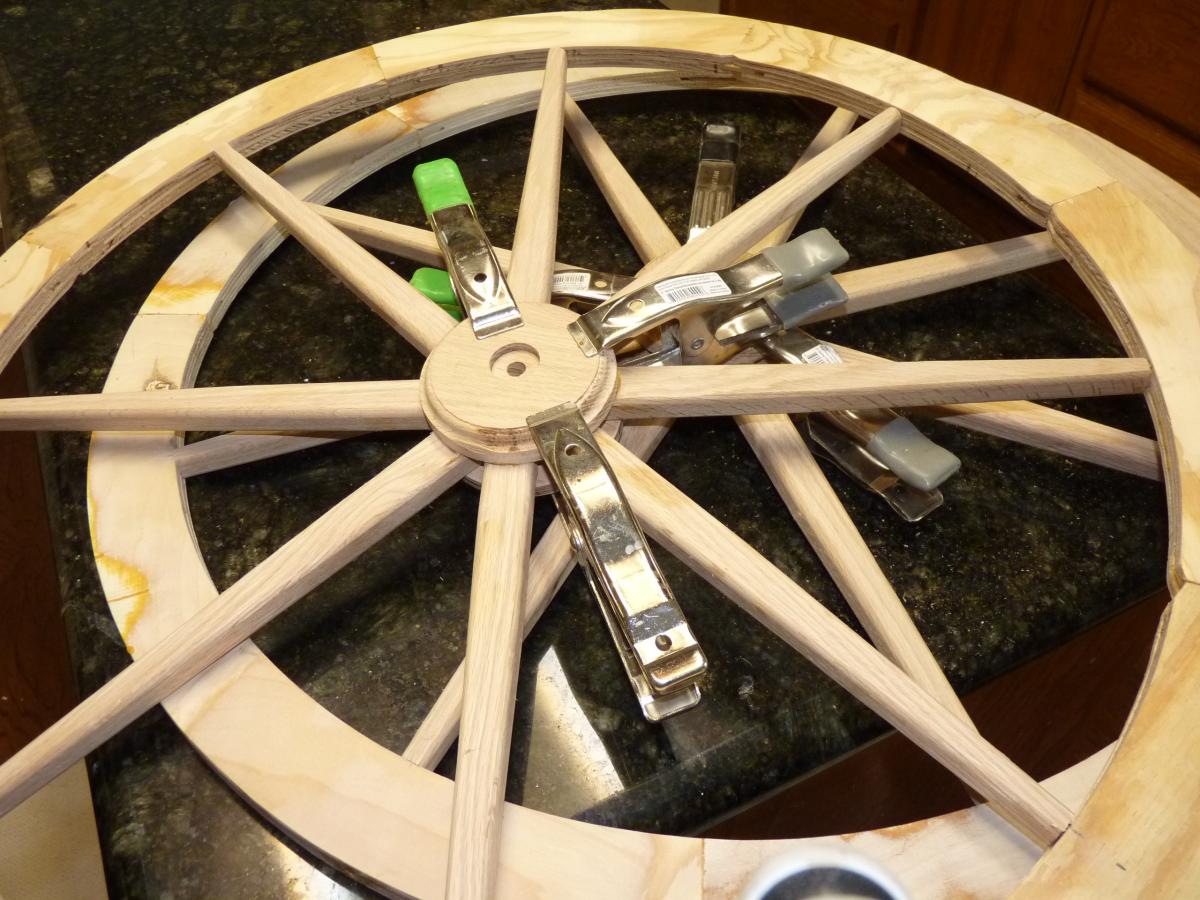
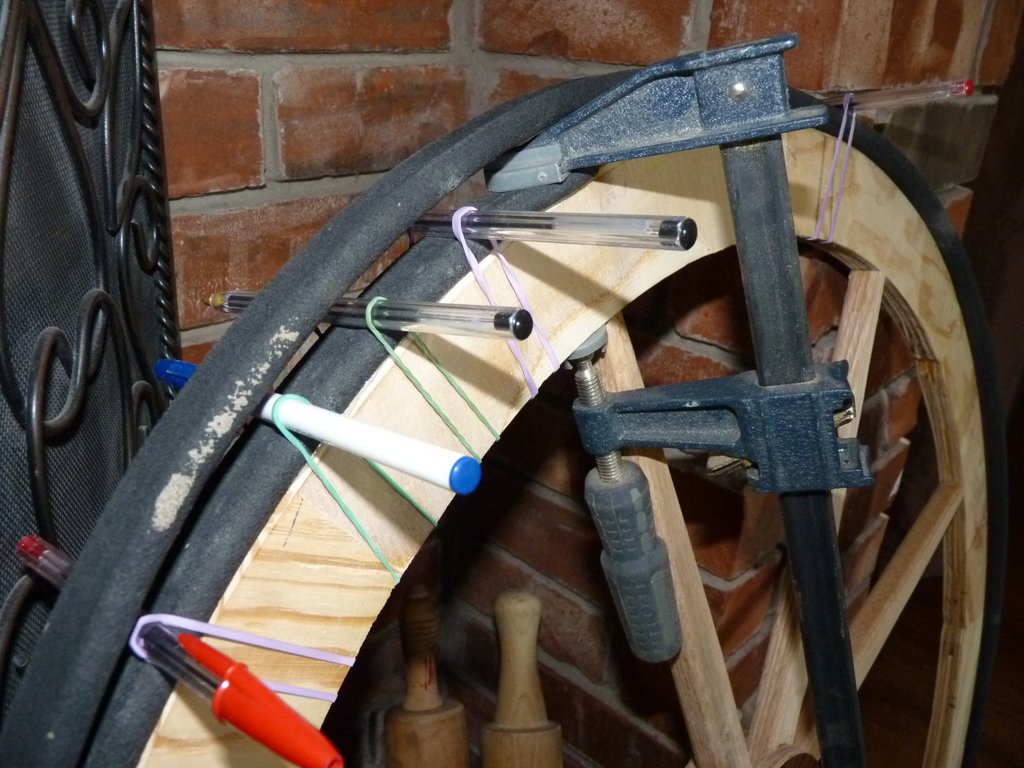
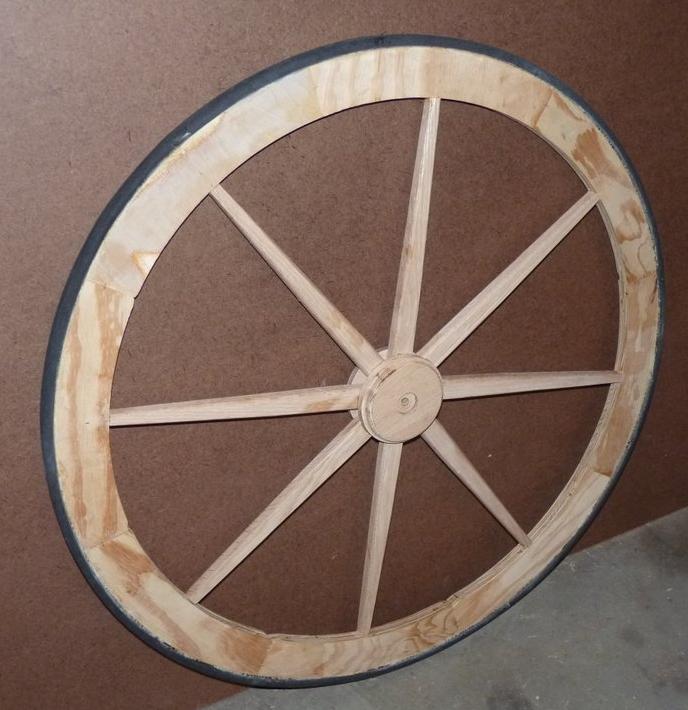
Leave a Reply